With the ever-growing popularity of Korean culture all over the world in the form of K-dramas and K-pop, Korean cuisine isn’t far behind. Koreans prepare a wide variety of vegetables, from wild greens to flower leaves, as well as seafood, including seaweed and jellyfish, and several varieties of meat and fowl. For those who are still unfamiliar with Korean cuisine, here is a list of all must-try Korean foods to feast on.
1. Bibimbap
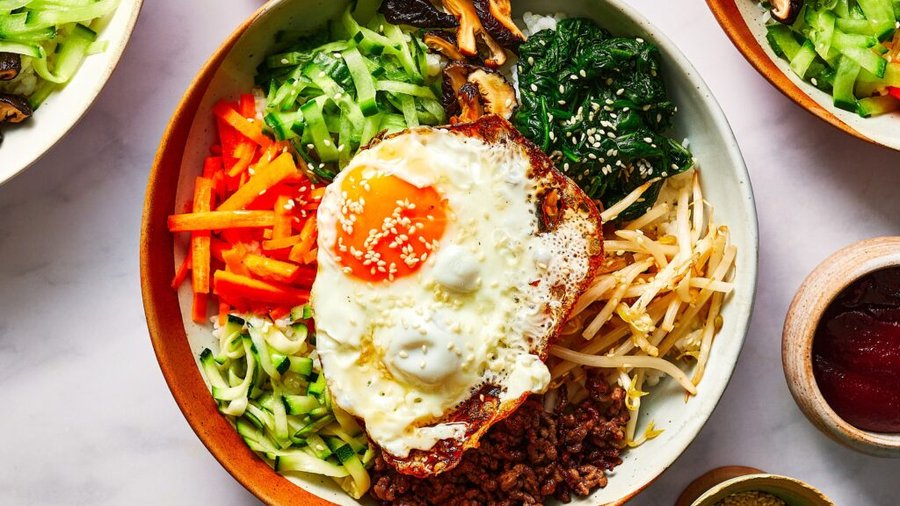
Many people consider bibimbap to be one of the most well-known and beloved Korean dishes. Even if individuals have never heard of Korea, they are likely to have eaten bibimbap. Bibimbap is described as “mixed rice with meat and various vegetables.” This dish can be made in a variety of ways, depending on your preferences and dietary needs (for example, microgreens bibimbap) as well as the dish or bowl it is served in (e.g. dolsot bibimbap and yang pun bibimbap).
Also check out: Beginner’s guide to the world of K-dramas
2. Mandoo
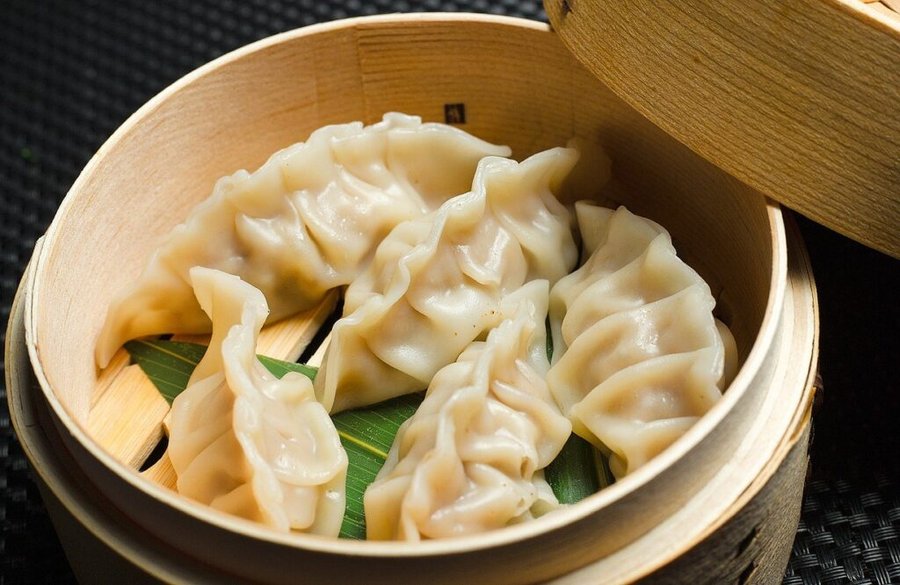
Mandu or mandoo are traditional Korean dumplings that are simple to prepare. These delectable little dumplings are loaded with a variety of meat and/or veggies, and there are almost as many mandoo varieties as there are Korean cooks. The dumplings are versatile and delicious, serving as a main dish as well as a snack, appetiser, or a mess-free lunch. Mandoo is a traditional Korean Lunar New Year dish that is commonly cooked by families as a symbol of good fortune for the next year.
Also check out: How Korean TV series are taking over the best spots on Netflix?
3. Tteokbokki

Tteokbokki, also known as tteokmyeon or tteokbokki-tteok, is a famous Korean dish prepared from little garae-tteok (long, white, cylinder-shaped rice cakes) called tteokmyeon or tteokbokki-tteok. Tteokbokki is frequently coupled with eomuk (fish cakes), boiled eggs, and scallions in meals. It can be seasoned with a spicy gochujang (chilli paste)-based sauce or a non-spicy ganjang (soy sauce)-based sauce; the former is the more frequent, while the latter is less common and occasionally termed gungjung-tteokbokki.
Also check out: Famous must try food in Madhya Pradesh for all the foodies out there.
4. Bulgogi

Korean Bulgogi, meaning “fire meat,” is a gui (Korean-style grilled or roasted meal) composed of thin, seasoned beef or pork slices barbecued on a barbecue or stovetop griddle. In home cuisine, it’s frequently stir-fried in a skillet. Beef pieces such as sirloin, rib eye, and brisket are typically utilised in this meal. The meal originated in the northern parts of the Korean Peninsula, but it is now quite popular in South Korea, where it can be bought as pan-ready kits in anything from premium restaurants to local groceries.
5. Kimchi Jjigae
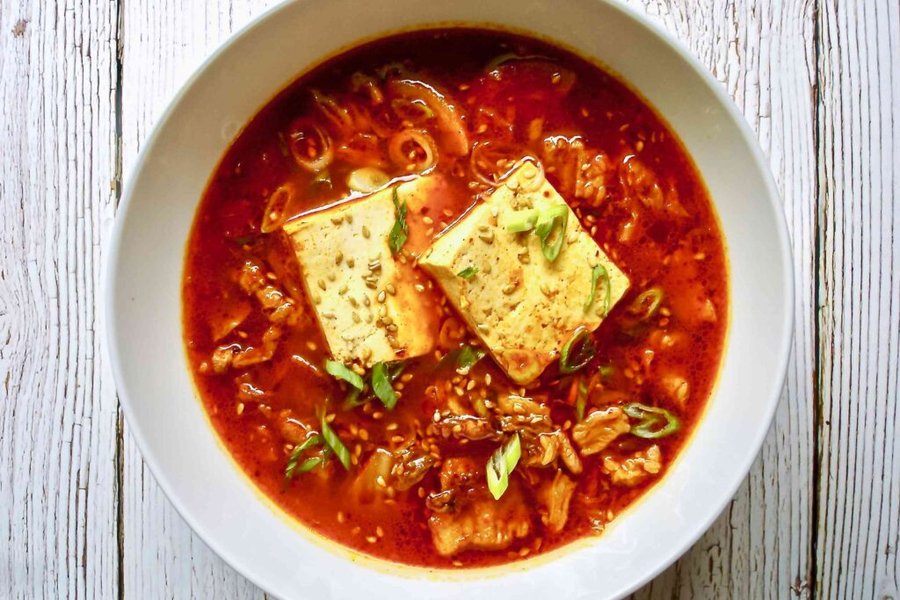
Kimchi-jjigae, also known as kimchi stew, is a Korean stew cooked with kimchi and additional ingredients including pork or shellfish, scallions, onions, and chopped dubu. In Korean cuisine, it is one of the most popular stews. Kimchi existed as a non-spicy pickled vegetable meal even before the Joseon dynasty; however, it was not until the mid-era introduction of chilli peppers to the Korean peninsula that the type of kimchi that has become the de facto norm of today was born. Kimchi jjigae is thought to have originated around the same time.
6. Jjajangmyeon

Jjajangmyeon is a Korean noodle dish with a thick sauce consisting of chunjang, chopped pork, and veggies. It’s a popular Korean-Chinese cuisine, along with jjamppong (hot seafood noodle soup) and tangsuyuk (sweet and sour pork or beef). Korean-Chinese cuisine, also known as Junghwa Yori, was created by early Chinese immigrants in Korea. It’s an important feature of Korean cuisine.
7. Samgyeopsal

Samgyeop-sal, which means “three layer flesh” in Korean, refers to striations of lean meat and fat in the pig belly that look as three layers when cut. Simply grill the meat on a Korean BBQ grill pan until both sides are done, then serve with fresh greens and a spicy dipping sauce known as ssamjang. Because the meat’s flavour is already quite savoury, dipping sauce and/or other BBQ matching side dishes are employed to add some more zing flavour.
8. Gimbap
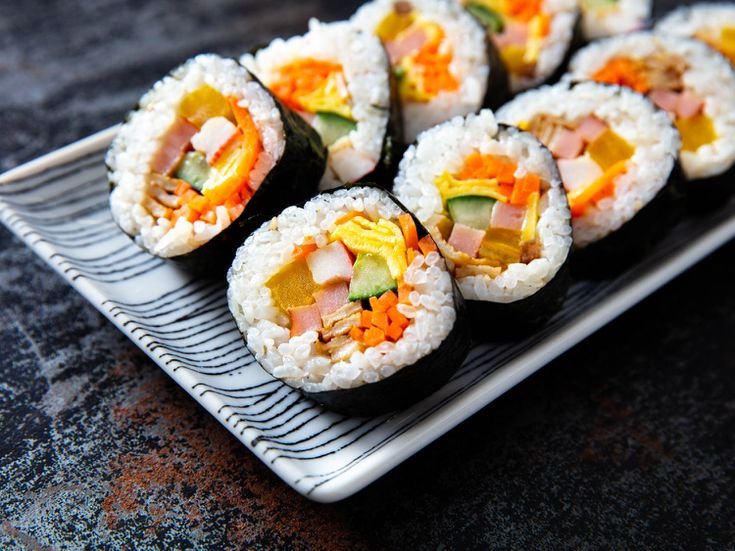
Gimbap (romanised as kimbap) is a Korean dish made of cooked rice and items including vegetables, seafood, and meats that are rolled in gim (dried seaweed sheets) and served in bite-size slices. Gimbap is easy to eat in bite-sized pieces no matter where you are. As a result, the dish is frequently served as part of a picnic or outdoor event’s packed meal, or dosirak, and can also be eaten as a light lunch with danmuji (yellow pickled radish) and kimchi. It is a popular take-out cuisine in South Korea and internationally, and because of its portability, it is known as a convenient food.
9. Korean Fried Chicken
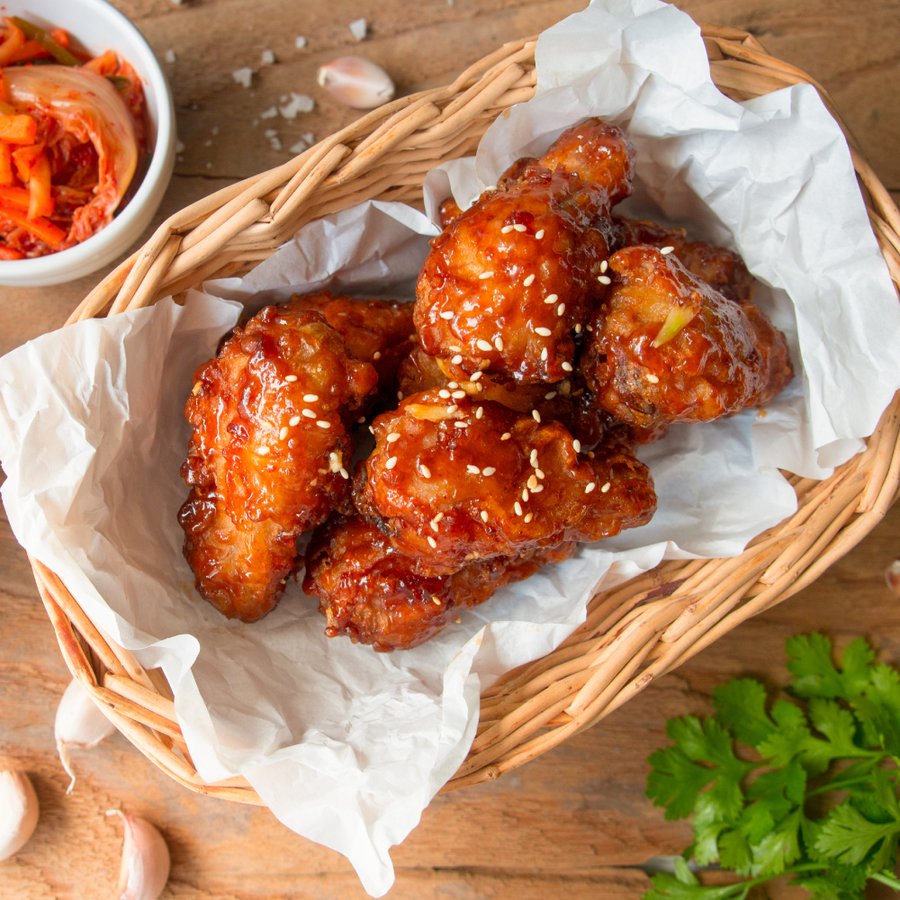
Korean fried chicken, also known as chikin in Korea (from the English word “chicken”), refers to a range of fried chicken meals made in South Korea, such as the basic huraideu-chicken (from the English word “fried chicken”) and spicy yangnyeom chicken (“seasoned chicken”). Fried chicken is eaten as a dinner, an appetiser, anju (food offered and eaten with drinks), or an after-meal snack in South Korea. Prior to and after frying, the chicken is generally seasoned with spices, sugar, and salt. After frying, the chicken is frequently hand-painted with sauce with a brush to coat it uniformly with a thin layer. Korean fried chicken is frequently eaten with pickled radishes and beer (or carbonated beverage).
10. Patbingsu

Bingsu, also known as bingsoo in Korea, is a shaved ice delicacy with sweet toppings including chopped fruit, condensed milk, fruit syrup, and red beans. Pat-bingsu, or red bean shaved ice, is the most popular type. In the past, natural ice was the major ingredient of ice, but as artificial ice and high-quality sweeteners were available, it was enhanced into boiling red bean shaved ice or fruit shaved ice mixed with various fruits. In Korea, it is one of the most popular summer treats or snacks. It resembles a massive snow mountain in a bowl, with colourful fruits, sweet red beans and rice cake bits, as well as sweet creamy condensed milk.
Featured Image Credits – EazyDiner




